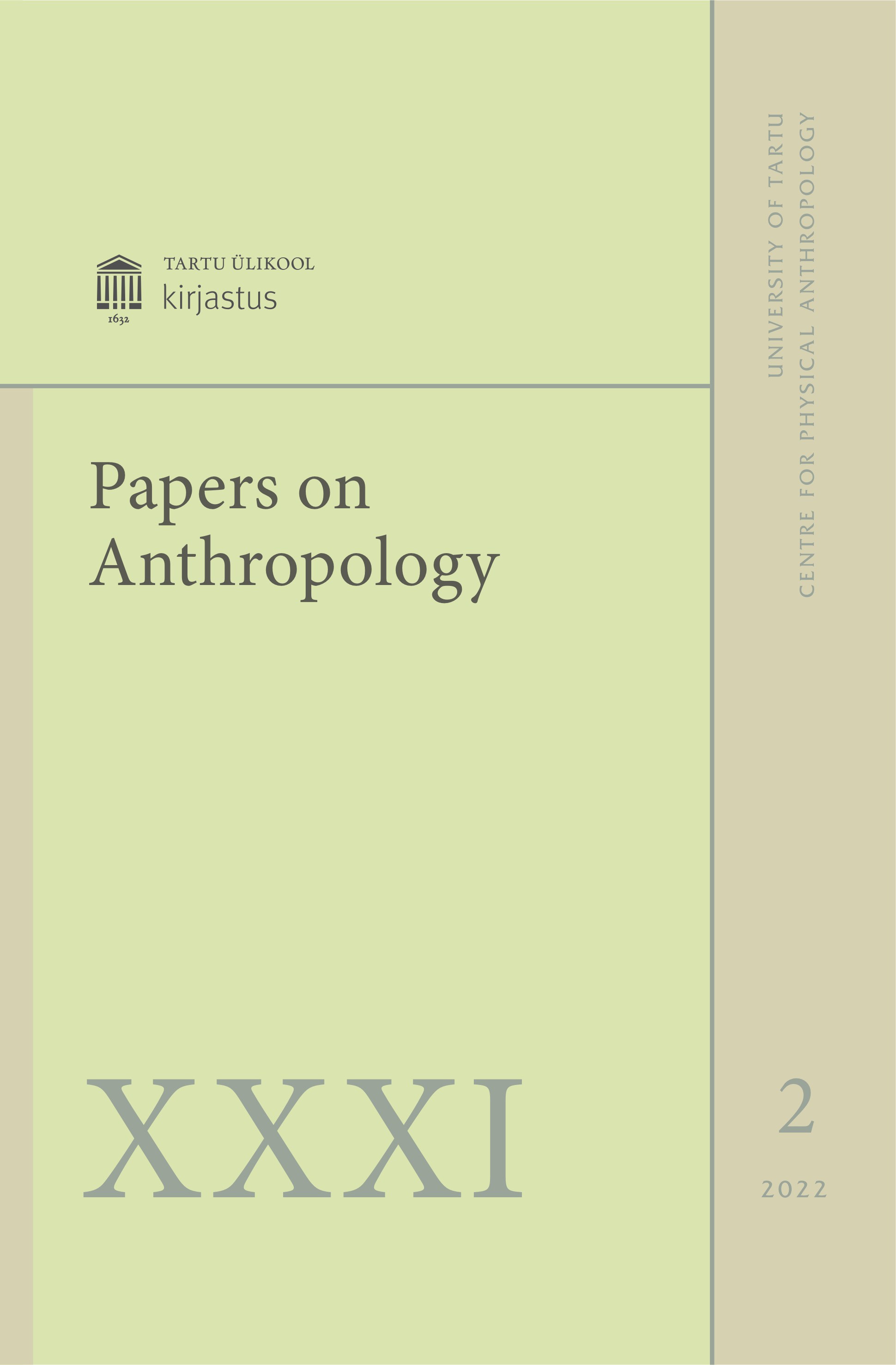Body composition of female office workers compared with infrared reflection measurement, bioimpedance analysis and calipermetry
DOI:
https://doi.org/10.12697/poa.2022.31.2.03Keywords:
percentage of body fat, bioimpedance analysis, calipermetry, infrared reflection measurement, body composition, womenAbstract
There are currently many different anthropometric methods for determining the individual body fat percentage, as well as almost as many variants of bioelectric impedance analysis (BIA) and only a single method of infrared reflection measurement (IR) as easily available methods of field research.
The present study aims at a simultaneous comparison between calipermetry, IR and BIA. In particular, the question which measurement method could be used as an equivalent method in the event of failure of BIA or IR is investigated.
The sample group consisted of 121 female office workers (average age 32.5 ± 9.4 years, average height 164.5 ± 6.3 cm and average weight 60.3 ± 6.8 kg), from the Rhine-Main area.
The measurements were previously scheduled and mostly carried out during the lunch break. For anthropometry, 13 skin fat folds were measured with the Accu® Measure Caliper, thigh circumference with a measuring tape, the height with a height measuring device and the body mass on the weight scale. Subsequently, an IR measurement (Futrex®) and a BIA (InBody®) were performed on the same subjects.
The parameters of body fat percentage and total body water (in L) were examined.
Statistical methods were correlation coefficients, Bland-Altman comparison and paired t-test for equivalence.
For the women studied, the highest correlation coefficients were in the comparisons between the formulas according to Parízková and Brožek et al. (r = 0.82), as well as for Parízková and Siri (r = 0.82).
The correlation coefficient for the IR vs. BIA comparison was r = 0.92.
A key result of the present study was the finding that the investigated methods in a female study group could not be substituted in an equivalent way.

